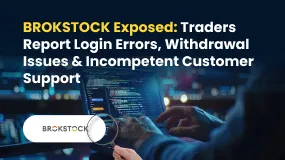简体中文
繁體中文
English
Pусский
日本語
ภาษาไทย
Tiếng Việt
Bahasa Indonesia
Español
हिन्दी
Filippiiniläinen
Français
Deutsch
Português
Türkçe
한국어
العربية
Payment Facilitators: How They Work and How to Become One
Abstract:How does the PayFac model work, and how can you get the best out of it?

Payment facilitators or the PayFac landscape used to be simplified and defined by offering customers the possibility of accepting electronic payments by granting access to their own infrastructure.
Take Advantage of the Biggest Financial Event in London. This year we have expanded to new verticals in Online Trading, Fintech, Digital Assets, Blockchain, and Payments.
However, the nature of the game is changing as many companies as possible or merchant services are becoming payment facilitators themselves.
By having in-house payments offerings, companies can take greater control of their customer relations, better manage their risk, maximize control over their own operations, all while boosting their profit margins.
This newfound revenue stream may be hard to get, but it is expected to grow in the future, so if your company sees fit to join the payment facilitator ecosystem, nows the time.
As such, read on to discover how the PayFac model works, how to get the best out of it, and how your company can become a payment facilitator.
Understanding the Payment Facilitator model
The payment facilitator model was created as a way of streamlining business processes in a way that would allow them to accept electronic payments.
Payment facilitators will thus take the reins of the onboarding processes and other elements of the transaction flow for their customers, commonly referred to in the payment facilitator model as sub-merchants.
Originally, merchants who wished to accept credit card transactions were pretty much forced into setting up an account with a bank-sponsored company, most known as a merchant acquirer.
However, by doing so, merchants would be met with a highly complex and incredibly time-consuming process, something which would deeply hamper their businesses.
Accordingly, payment facilitators arose to put an end to this problem. They did so by setting up a system in which they remove friction by providing a master merchant account via an acquirer. In turn, their clients can start accepting payments via credit card.
Shortly after, companies were quick to understand that by becoming payment facilitators, their onboarding process would become better as would their payment experience.
Moreover, given that they knew their verticals and pursuing this line would generate significant revenue from payments, what ended up happening was a major influx of new payment facilitators across several industries.
Who Gets Involved in the PayFac Scene?
There are five main elements which compose the payment facilitator landscape.
1. The payment facilitators themselves: which are companies providing the necessary infrastructure and allows their sub-merchants to accept payments via credit card. This crucial element underwrites and onboards all sub-merchants and subsequently empowers them with the technology that allows them to process electronic payments as well as to receive the respective funds from those payments.
2. The sub-merchants: formerly known as ‘merchants’ (at least in the traditional model) the sub-merchants are the payment facilitators customers. As pointed out above, they get onboarded so that they can begin accepting electronic payments. To do so, they will need to go through a mandatory series of checks as a way to verify their own legitimacy. They can range from your average physical storefront dealing with card-present transactions or your online business which needs to accept card-not-present transactions.
3. The Acquiring Banks: Payment facilitators cannot operate on their own which means they need to enter into an agreement with either a licensed payments institution that is recognized by the card networks or an acquiring bank.
Acquiring banks will assume the payment facilitators risk. They will underwrite it and ensure that the required infrastructure, procedures, policies and technology are there to make things run smoothly and effectively.
Accordingly, the acquiring bank will keep a close eye on the payment facilitator, making sure that compliance is being upheld and the onboarding process is being done responsibly.
Lastly, the acquirer will be responsible for receiving and handling data and money which the card networks provide and then passing it to the payment facilitator.
4. The payment processors: which are basically mandatory to operate as a payment facilitator. The payment processors take the responsibility of what concerns the processing and settling of every transaction that the payment facilitators sub-merchants initiate.
Every time a consumer makes a purchase with their card, the payment processor will receive a request for initial authorization and proceed to forward it to the matching card network. The card network will subsequently analyze it and send the authorization response back and once the transaction is finally completed the cardholders bank will follow suit and send the acquiring bank the funds.
5. The sponsors: Sponsors here work as an umbrella term which covers all entities which underwrite prospective payment facilitators or enable the payment facilitators entry into the system. It has also become almost standard to bundle acquiring banks and payment processing together and call them sponsors.
Accordingly, if a business is looking into becoming a payment facilitator, it is mandatory for it to apply for an account with a sponsor.
What Does a Payment Facilitator Do?
In essence, a payment facilitator takes on 4 major roles:
Underwriting and Onboarding
In the conventional models, merchants will need to apply for their merchant accounts via an acquiring bank. The process is complex, filled with bureaucracy and paperwork and incredibly time-consuming.
The role of the payment facilitator here is twofold as it needs to create a proper merchant platform or experience by crafting a tailor-made process for the merchants vertical or niche while simultaneously putting the process into high gear, removing friction and speeding things along.
However, before doing so the payment facilitator is required to perform some mandatory steps to confirm that the sub-merchant its about to underwrite posts that are no risk or threat to its ecosystem.
This is usually achieved by looking into KYC (Know Your Customer) data as it can provide information regarding the legitimacy of the prospective sub-merchants business.
Moreover, a different background check is done through lists of known high-risk merchants. Traditionally merchants, that might have been associated with criminal activities fit this profile. These checks are conducted with entities like the OFAC (Office of Foreign Asset Control) or by checking lists like Mastercards MATCH list (Member Alert to Control High-Risk Merchants).
Payment facilitators thus provide a near frictionless underwriting process which allows for sub-merchants to hit the ground running in seconds (rather than weeks), all while keeping the ecosystem safe.
Transaction Monitoring
Payment facilitators are taking liability for the transactions their sub-merchants are processing. This in turn makes them responsible for monitoring those transactions as they need to look for suspicious activities and anomalous behavior.
The standard way of doing so is via transaction monitoring software which records them, sorts through them all, and flags the ones which need to be further investigated.
Merchant Funding
There is a significant number of payment facilitators that are responsible for both the funding of their underlying sub-merchants and the reconciling of transactions.
By managing the funding process, payment facilitators became leaps ahead of the traditional models in which merchants were funded in a specific schedule which had to be set by the acquirer.
Facilitators obviously adhere to specific banking regulations and must be compliant with both government agency regulations and card brand standards and policies.
This shift left to sponsors creates payout structures for payment facilitators.
Chargeback Managing
Managing the chargeback process in tandem with the acquiring bank is standard practice. Submerchants which occasionally receive chargebacks are required to provide documentation which the facilitator then passes along to the acquirer. The acquirer, in turn, will initiate the chargeback and transfer the respective funds to the bank.
Can our Business Become a Payment Facilitator?
The road to becoming a payment facilitator is certainly hard but also rewarding.
As of now, software companies compose most of the influx of new adopters of the payment facilitator model, namely those who already have payment components in their underlying software.
As such, companies which already have verticals in e-commerce, POS systems, invoicing and billing, are taking the leap given that it empowers their customer experience while owning more of said experience and generating extra revenue from the process.
This added control and flexibility improve the payment experience and greatly enhances their overall product but isnt limited to software companies.

Disclaimer:
The views in this article only represent the author's personal views, and do not constitute investment advice on this platform. This platform does not guarantee the accuracy, completeness and timeliness of the information in the article, and will not be liable for any loss caused by the use of or reliance on the information in the article.
Read more

WikiFX Elite Club Committee Makes Its Debut, Charting the Future of the Global Trading Ecosystem
November 11, 2025 – The WikiFX Elite Club Committee (hereafter “the Elite Committee”) made its significant debut on the international stage at WikiEXPO Dubai 2025. Core members from the Middle East, Southeast Asia, and Chinese-speaking regions gathered to witness the beginning of a new chapter for the Elite Club.

WikiEXPO Dubai 2025 Concludes Successfully — Shaping a Transparent, Innovative Future
On November 11, WikiEXPO Dubai 2025, hosted by WikiGlobal and co-organized by WikiFX, successfully concluded. As one of the world’s most influential Fintech expos, this event brought together more than 570 regulatory representatives, industry leaders, and innovation pioneers from across the globe. Through in-depth discussions on core issues such as regulatory compliance, the forex market, investment strategies, and sustainable finance, the event delivered a profound experience that masterfully blended intellectual depth with actionable insights.

The 5%ers Review: Is it a Scam or Legit? Find Out from These Trader Comments
Did you face reduced leverage and hiked fees without any explanation from The 5%ers broker? Do you find The 5%er rules strange for getting a funded account from this prop trading firm? Has the broker closed your trade inappropriately, preventing you from making gains in the forex market? All these allegations have dominated The 5%ers review segment online. Looking at this, the WikiFX team investigated and found some startling comments against the broker. In this article, we have shared those complaints. Read on!

BROKSTOCK Exposed: Traders Report Login Errors, Withdrawal Issues & Incompetent Customer Support
Is your BROKSTOCK trading account full of inefficiencies? Do the recurrent BROKSTOCK login errors prevent you from opening and shorting positions at a favorable price? Has the broker failed to honor your withdrawal requests? Do you face order execution price issues? Has the customer support service failed to resolve your queries? You are not alone! In this BROKSTOCK review article, we have shared some complaints that need a close introspection. Read on to explore them.
WikiFX Broker
Latest News
Is Fyntura a Regulated Broker? A Complete 2025 Broker Review
Zetradex Exposed: Withdrawal Denials, Account Freeze & Bonus Issues Hurt Traders
Is Forex Zone Trading Regulated and Licensed?
PINAKINE Broker India Review 2025: A Complete Guide to Safety and Services
Exness Restricted Countries List 2025 Explained
Is Uniglobe Markets Legit? A 2025 Simple Guide to Its Safety, Services, and User Warnings
Is Inzo Broker Safe or a Scam? An Evidence-Based Analysis for Traders
WikiEXPO Dubai 2025 “Welcome Party” Kicks Off Tonight!
He Trusted a WhatsApp Group and Lost RM659,000
Moomoo Singapore Opens Investor Boutiques to Strengthen Community
Currency Calculator



